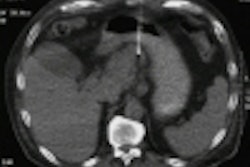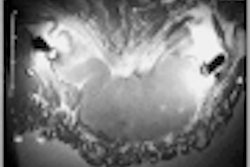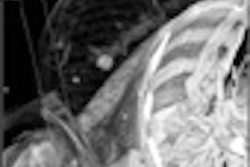MR and CT increase diagnostic confidence for patients with lower back pain, but affect diagnosis and therapeutic treatment plans only minimally, according to findings presented in the latest issue of Radiology.
Dr. Maureen Gillan and colleagues from the Scottish Back Trial Group in Scotland assessed the impact of cross-sectional MR and CT imaging on clinical decision making for 145 patients with symptomatic lumbar spine disorder. Participants had been referred to orthopedists or neurosurgeons with no certainty about whether or when to perform imaging.
Patients in the controlled before-and-after study were part of a "subgroup within a multicenter pragmatic randomized comparison of two imaging policies on lower back pain treatment," the authors wrote (Radiology, August 2001, Vol. 200:2, pp. 393-399).
Participants were randomized into imaging or no-imaging groups, unless a clear clinical indication developed. Imaging was performed with standard MRI and CT scanners. Paired assessments were made of diagnosis, diagnostic confidence, proposed treatment, treatment confidence at trial entry and follow-up, and expectations of imaging.
The initial diagnostic category showed that approximately 50% of patients in both groups had chronic low back pain, and 20% had symptomatic lumbar disk herniation. At follow-up, changes in diagnostic category were reported for 35 of 81 (43%) patients in the imaging group and 34 of 63 (54%) in the non-imaging group.
Researchers found no significant statistical differences between the study groups regarding diagnostic and therapeutic decisions, and treatment plans were unchanged for approximately 50% of patients in both groups.
On the other hand, there was a significant increase in diagnostic and therapeutic confidence for both groups between trial entry and follow-up, with a significantly greater increase in diagnostic confidence for the imaging group.
"Access to early imaging increased diagnostic confidence at follow-up, but this was not associated with any greater change in diagnosis or treatment plan. More reliable information on the influence of imaging on actual patient treatment is likely to come from the two-year follow-up of the participants in the larger Scottish Back trial, which will provide information on health care resource use and patient outcomes," the authors wrote.
By Jennifer LungAuntMinnie.com staff writer
August 20, 2001
Related Reading
Researchers question use of imaging for low back pain, July 11, 2001
Radiography discouraged for patients with low back pain, February 16, 2001
Copyright © 2001 AuntMinnie.com



















